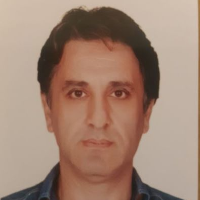Analysis of Corona Wind Effect on Mass Transfer and Energy Consumption in Drying of Moist Object
In this paper, drying of the moist object is numerically investigated in the forced convection with and without the electric field. Finite volume method is used to solve governing equations of electric, flow, temperature, and the concentration fields in flow phase, as well as the temperature and the moisture fields in the moist object. In this study, the effect of applied voltage and the arrangement of the emitting electrode are evaluated. The results indicated that in presence of electric field, the increment of the applied voltage for 18 kV to 24 kV, the mass transfer from porous object 3.78 times and power consumption 7.96 times are increased. It is also found that the drying rate is increased by decreasing the distance between the emitting and collecting electrodes. According to numerical results, the mass transfer enhancement is usually accompanied by penalty of electric energy consumption. Therefore, the specific energy consumption has been evaluated as final criterion. It is shown that the specific energy consumption of the electrohydrodynamic drying process has been remarkably affected by the changing of the emitter arrangements. Finally, an optimum arrangement has been introduced as the affordable arrangement.
-
Numerical investigation of effect of plasma actuator on the flow and natural convection heat transfer through the vertical channels with corrugated wall
M. Dejakam, N. Amanifard, H. Mohaddes Deylami*, H. Moayedi
Journal of Mechanical Engineering, -
Numerical investigation of the effect of DBD plasma actuator on performance enhancement of an air-solid particle cyclone separator
Amirhossein Karimi, Nima Amani Fard *, Hesam Moayedi
Amirkabir Journal Mechanical Engineering,



